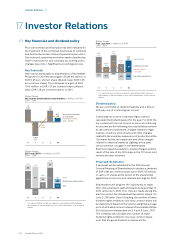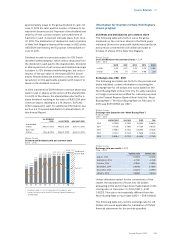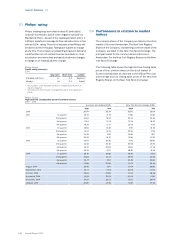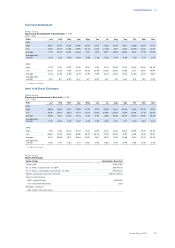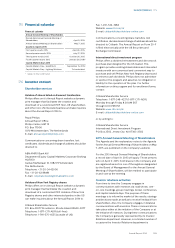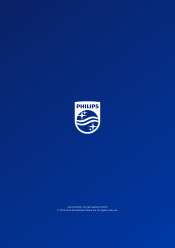Philips 2014 Annual Report Download - page 241
Download and view the complete annual report
Please find page 241 of the 2014 Philips annual report below. You can navigate through the pages in the report by either clicking on the pages listed below, or by using the keyword search tool below to find specific information within the annual report.Denitions and abbreviations 18
Annual Report 2014 241
18 Denitions and
abbreviations
BMC
Business Market Combination - As a diversied technology group, Philips
has a wide portfolio of categories/business innovation units which are
grouped in business groups based primarily on technology or customer
needs. Philips has physical market presence in over 100 countries, which
are grouped into 17 market clusters. Our primary operating modus is the
Business Market matrix comprising Business Groups and Markets. These
Business Market Combinations (BMCs) drive business performance on a
granular level at which plans are agreed between global businesses and
local market teams.
Brominated ame retardants (BFR)
Brominated ame retardants are a group of chemicals that have an
inhibitory eect on the ignition of combustible organic materials. Of the
commercialized chemical ame retardants, the brominated variety are
most widely used.
CO2-equivalent
CO2-equivalent or carbon dioxide equivalent is a quantity that describes,
for a given mixture and amount of greenhouse gas, the amount of CO2 that
would have the same global warming potential (GWP), when measured
over a specied timescale (generally 100 years).
Cash ow before nancing activities
The cash ow before nancing activities is the sum of net cash ow from
operating activities and net cash ow from investing activities.
Chlorouorocarbon (CFC)
A chlorouorocarbon is an organic compound that contains carbon,
chlorine and uorine, produced as a volatile derivative of methane and
ethane. CFCs were originally developed as refrigerants during the 1930s.
Circular economy
A circular economy aims to decouple economic growth from the use of
natural resources and ecosystems by using those resources more
eectively. By denition it is a driver for innovation in the areas of
material-, component- and product reuse, as well as new business models
such as solutions and services. In a Circular Economy, the more eective
use of materials enables to create more value, both by cost savings and
by developing new markets or growing existing ones.
Comparable sales
Comparable sales exclude the eect of currency movements and
acquisitions and divestments (changes in consolidation). Philips believes
that comparable sales information enhances understanding of sales
performance.
Continuing net income
This equals recurring net income from continuing operations, or net
income excluding discontinued operations and excluding material non-
recurring items.
Dividend yield
The dividend yield is the annual dividend payment divided by Philips’
market capitalization. All references to dividend yield are as of December
31 of the previous year.
EBITA
Earnings before interest, tax and amortization (EBITA) represents income
from continuing operations excluding results attributable to non-
controlling interest holders, results relating to investments in associates,
income taxes, nancial income and expenses, amortization and
impairment on intangible assets (excluding software and capitalized
development expenses). Philips believes that EBITA information makes
the underlying performance of its businesses more transparent by
factoring out the amortization of these intangible assets, which arises
when acquisitions are consolidated. In our Annual Report on form 20-F
this denition is referred to as Adjusted IFO.
EBITA per common share
EBITA divided by the weighted average number of shares outstanding
(basic). The same principle is used for the denition of net income per
common share, replacing EBITA.
Electronic Industry Citizenship Coalition (EICC)
The Electronic Industry Citizenship Coalition was established in 2004 to
promote a common code of conduct for the electronics and information
and communications technology (ICT) industry. EICC now includes more
than 40 global companies and their suppliers.
Employee Engagement Index (EEI)
The Employee Engagement Index (EEI) is the single measure of the overall
level of employee engagement at Philips. It is a combination of
perceptions and attitudes related to employee satisfaction, commitment
and advocacy.
Energy-using Products (EuP)
An energy-using product is a product that uses, generates, transfers or
measures energy (electricity, gas, fossil fuel). Examples are boilers,
computers, televisions, transformers, industrial fans, industrial furnaces
etc.
Free cash ow
Free cash ow is the net cash ow from operating activities minus net
capital expenditures.
Full-time equivalent employee (FTE)
Full-time equivalent is a way to measure a worker’s involvement in a
project. An FTE of 1.0 means that the person is equivalent to a full-time
worker, while an FTE of 0.5 signals that the worker is only half-time.
Global Reporting Initiative (GRI)
The Global Reporting Initiative (GRI) is a network-based organization that
pioneered the world’s most widely used sustainability reporting
framework. GRI is committed to the framework’s continuous improvement
and application worldwide. GRI’s core goals include the mainstreaming of
disclosure on environmental, social and governance performance.
Green Innovation
Green Innovation comprise all R&D activities directly contributing to the
development of Green Products or Green Technologies.
Green Products
Green Products oer a signicant environmental improvement in one or
more Green Focal Areas: Energy eciency, Packaging, Hazardous
substances, Weight, Recycling and disposal and Lifetime reliability. The
life cycle approach is used to determine a product’s overall environmental
improvement. It calculates the environmental impact of a product over its
total life cycle (raw materials, manufacturing, product use and disposal).
Green Products need to prove leadership in at least one Green Focal Area
compared to industry standards, which is dened by a sector specic peer
group. This is done either by outperforming reference products (which can
be a competitor or predecessor product in the particular product family)
by at least 10%, outperforming product specic eco-requirements or by
being awarded with a recognized eco-performance label. Because of
dierent product portfolios, sectors have specied additional criteria for
Green Products, including product specic minimum requirements where
relevant.
Growth geographies
Growth geographies are the developing geographies comprising of Asia
Pacic (excluding Japan, South Korea, Australia and New Zealand), Latin
America, Central & Eastern Europe, the Middle East (excluding Israel) and
Africa.
Hydrochlorouorocarbon (HCFC)
Hydrochlorouorocarbon is a uorocarbon that is replacing
chlorouorocarbon as a refrigerant and propellant in aerosol cans.
Income from continuing operations
Net income from continuing operations, or net income excluding
discontinued operations.
Initiatief Duurzame Handel (IDH)
IDH is the Dutch Sustainable Trade Initiative. It brings together
government, frontrunner companies, civil society organizations and labor
unions to accelerate and up-scale sustainable trade in mainstream
commodity markets from the emerging countries to Western Europe.



